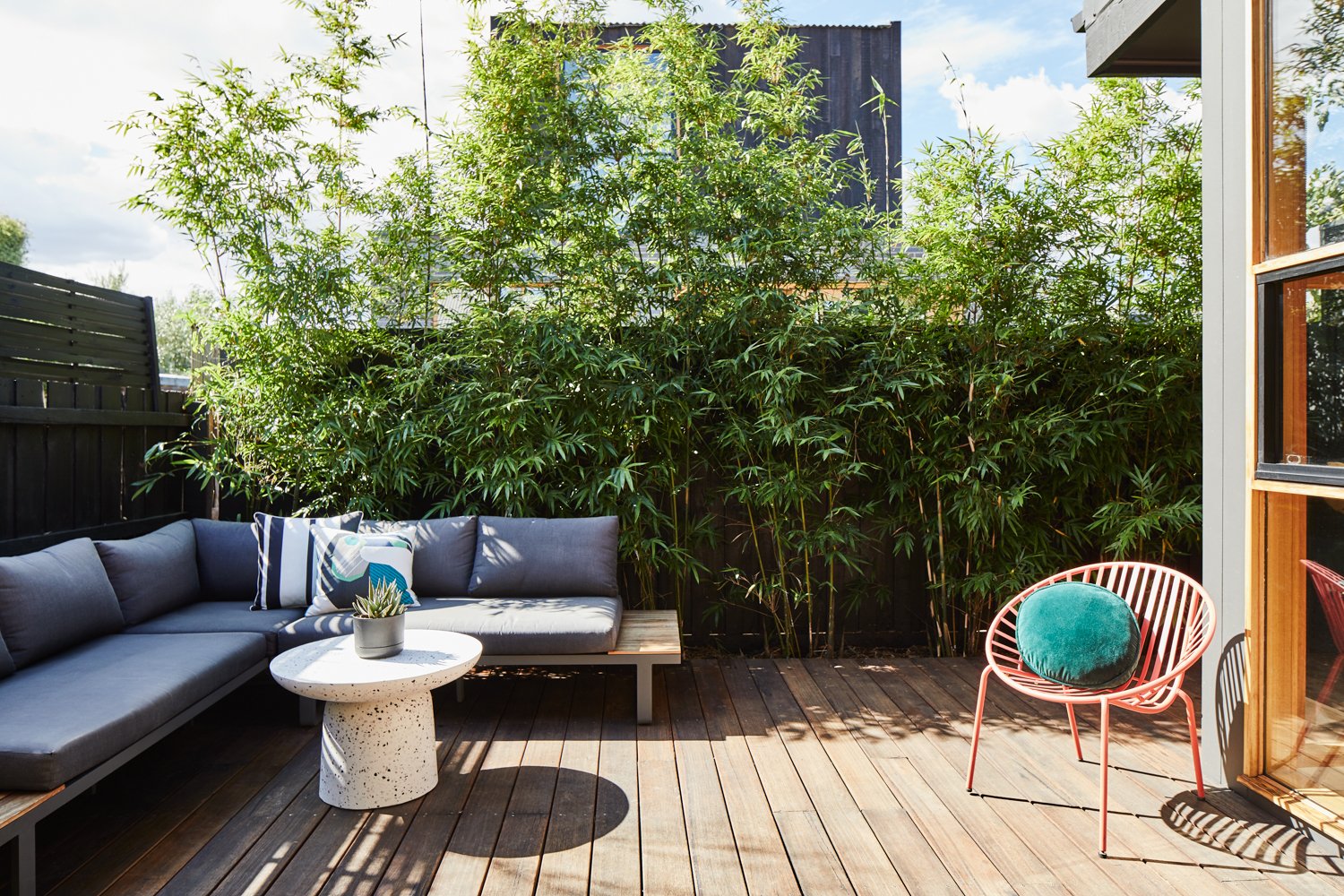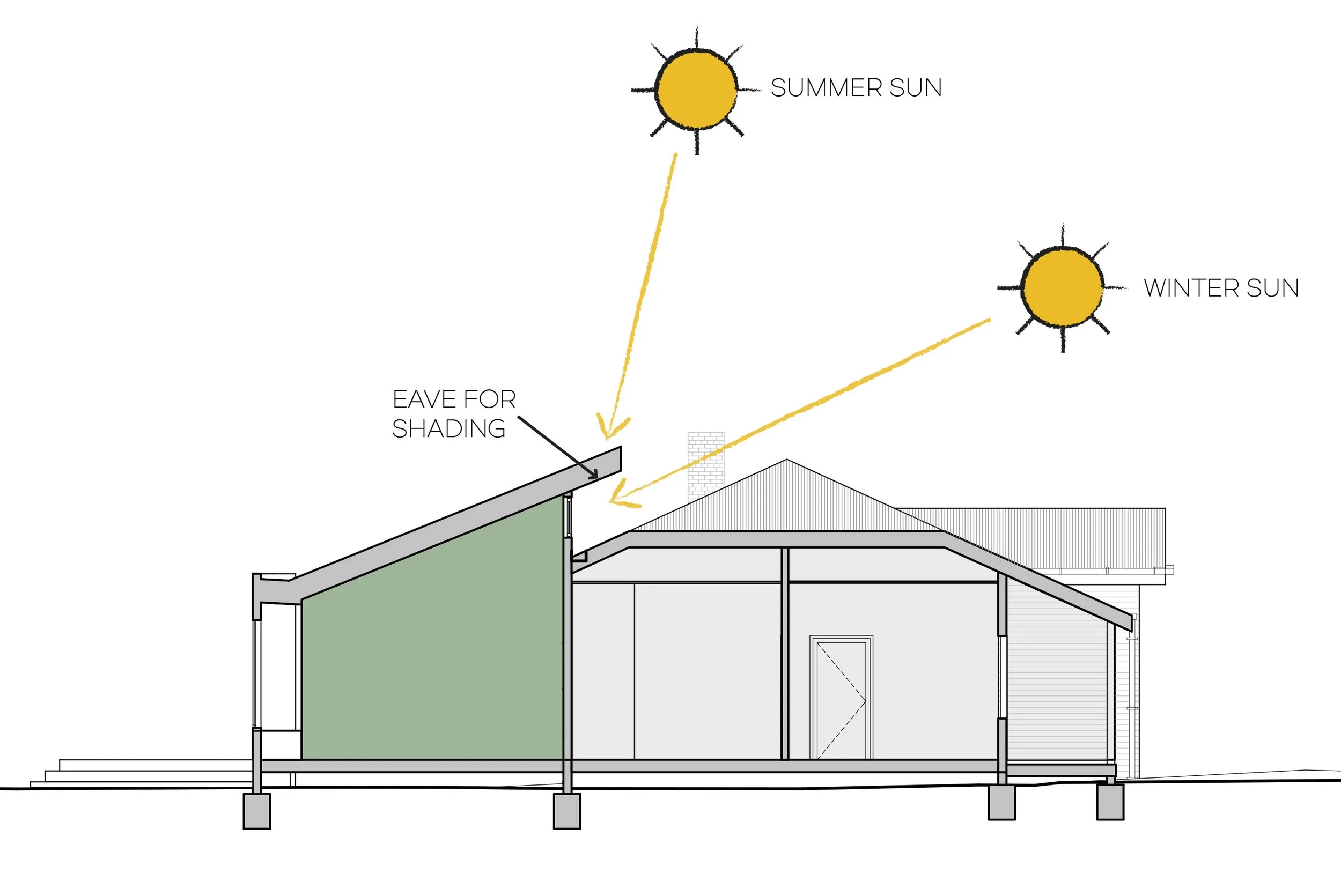Let there be light
We all know that for the best natural light, the ideal site faces north. Being able to orient living spaces in this direction means that you can make the most of the sunshine in winter and summer. However, if you are in the city or suburbs, you often don’t have the luxury of a perfect north-facing block. This does not mean that you are destined to live in darkness - quite the opposite. There are many mays to bring natural light into your space even when your orientation is less than textbook ideal.
Orient the programme to suit the available light
The key thing is to think about the use of the rooms and organising the plan so that it utlises the most appropriate light that is available. Not all rooms need to be bright and sunny, and we can use spatial organisation on the interior to make the most of the available natural light on the site. There’s nothing worse than a dark sunroom; equally using a sunny corner on a toilet or pantry is a waste.
In summer, the west light can be the harshest in the afternoon. This light can also be the hardest to control, as eaves can only do so much. After a certain point in the afternoon, the sun will shine directly into the room due to the angle of the setting sun. For thermal control, these areas are best left windowless and service areas such as laundries, pantries, and storage can be placed along it to buffer the heat from the spaces you will be living and sleeping in.
Eastern light can be great for rooms where you spend time in the morning. For example, you may want to utilise this in bedrooms, or in a reading room where you know you will want to spend time drinking a morning coffee while reading a paper.
South tends to be the area that is cast most in shadow. While this can initially seem unfortunate, it can be good to position spaces which benefit from soft diffuse light - think TV/ media rooms, walk-in pantries, bedrooms (if you like the dark), stairwells which don’t need bright illumination.
What happens if my living space faces south?
If you are renovating or extending, you will often not have the luxury of rearranging your whole house. Your living space might already face south, but that’s ok. There are many ways to bring light into a space. For example, by simply lifting a roof to allow for high-level clerestory windows, you can scoop in the much needed northern sun. For example, in this project, the living extension was designed with the highest point of the ceiling facing north, effectively acting as a light funnel. The windows also allowed for cross-ventilation in the space.
Using stairwells as lightwells
One area which can be used beyond its basic function is the humble stairwell.
These areas have a lot of height - which means that there is a lot of surface area to the exterior. They can also act as portals to create a lightwell in a space and brighten up a corner. No one likes a dark cramped stairwell!
In this project, a large double-height window was introduced to capture the street-facing northern sun. Because the window wasn’t directly facing a room, it created a bright area which bounced light back into the dining area. Coupled with the blue walls, it transformed an otherwise dark corner into a bright and fun feature in the house.
More than a window
Windows are just bits of glass that lets light in… right?
Yes, but in thinking creatively, they can be much more than that! Because of the ever-changing conditions that natural light brings, they can change the aesthetic of the material directly in front of them. Think stained glass, backlighting, reflections.
In this example, shelves were extended in front of the window to not only provide more storage, but use the window as natural illumination for the client’s glass collection. The changing light bouncing off the glassware means that the area never looks the same as reflections flicker around the space. Magical!
The humble skylight
We couldn’t do a post about light without including the humble skylight. They can be used in so may ways, such as over living areas to give the illusion of height, or near established gardens to bring in the greenery from a tree canopy.
What the skylight can also to is create the illusion of space in an area that is quite tight. In this example, a small bathroom could have been very pokey and dark. However the introduction of a skylight above the bath meant that shower time could become a pleasant light-filled experience. The skylight also allowed for borrowed light in the toilet directly adjacent - two birds, one skylight!
Embrace the bright ideas
Here at Circle Studio, we are always chasing the light. We believe that it can make or break a space and it is so important to feel a connection wth the outdoors.
Light should be a given in any good design. Just because a site is difficult does not mean the natural light needs to be sacrificed. WIth clever layout, design thinking, light can be optmised in almost any space.






